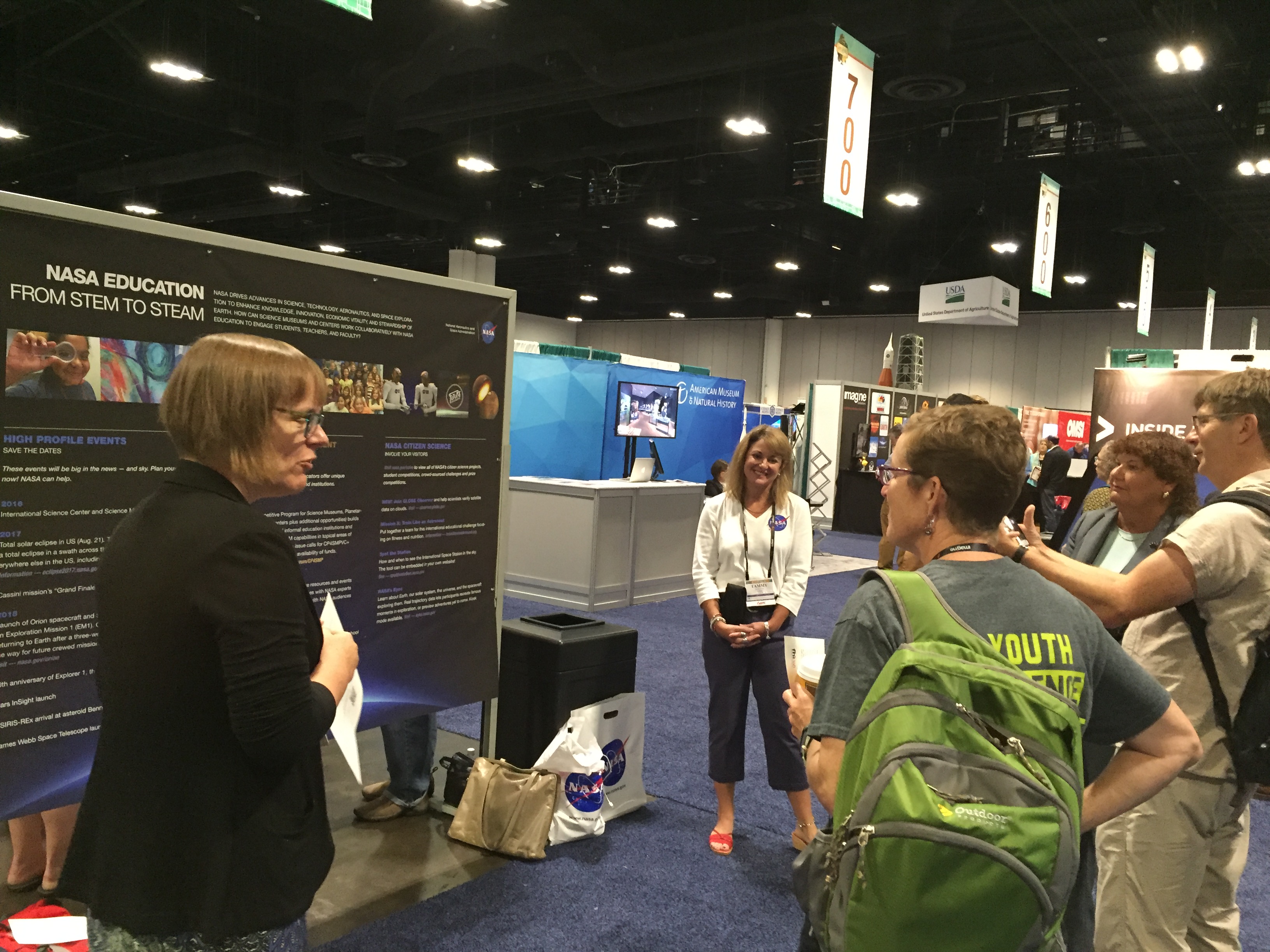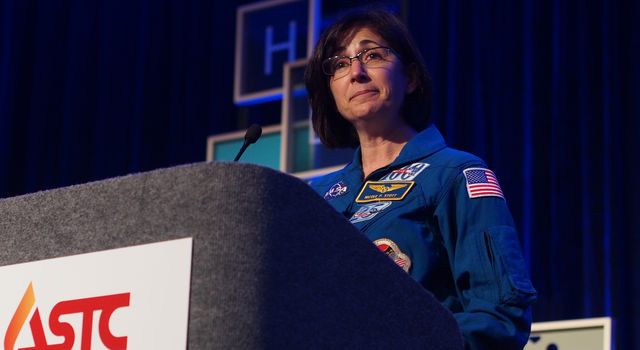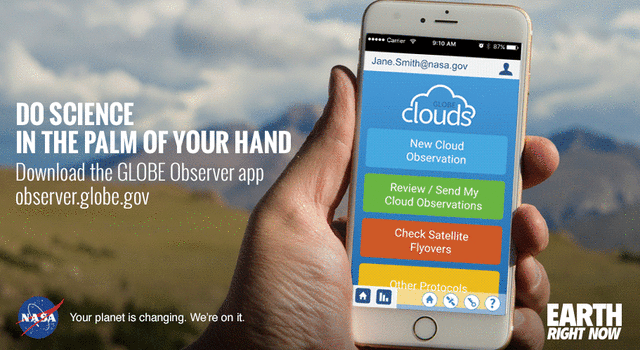Museum Alliance | October 5, 2016
NASA on Parade at Annual Science Center Conference
Where do museums shop for animatronic dinosaurs? Test out different planetarium formats? Get the latest news on exhibits to rent? The Association of Science-Technology Centers Annual Conference is one place! NASA’s Museum Alliance was there to spread the word about the Alliance and all the NASA resources available to science centers, as well as to check in with institutions already featuring NASA content. Here are a few highlights:
NASA’s Journey to Mars and Universe of Learning booths were hot spots. Institutes interested in presenting the future of human space exploration, answering big questions about how our universe works, or taking a virtual tour via Eyes on Exoplanets kept the staff busy.

Attendees learned how they could get involved with various NASA programs designed for museums and science centers.
Museums were excited to sign up for the new GLOBE Observer citizen science app and get their guests involved in collecting real Earth data. (But you don’t have to be with a museum to use the app or these resources!)
At the Live Demonstration Hour, actor Douglas Coler performed a play about the Gemini 4 spacewalk, which recently earned playwright Chris Bresky from the Adler Planetarium an award from the International Museum Theater Alliance.
Also at the demo hour, the Orlando Science Center’s Stephanie Kazmierzak and her four brave volunteers wowed the crowd with this engineering demonstration/party trick.
The agency’s Competitive Program for Science Museums, Planetariums, and NASA Visitor Centers provides funding in support of NASA-related content. (Check out the Map of Awardees to see what NASA content might be in a museum near you.) Many of the grantees attended the conference and shared project updates.
The Children’s Museum of Indianapolis, for instance, just opened its International Space Station exhibit, Beyond Spaceship Earth, and lets visitors see what its like to be an astronaut. Can’t make it to the museum? There’s an app for that!
The Discover NASA exhibit for libraries has been reaching about 20,000 people at each site it visits, with hosts putting on all kinds of related special programming. Check out the schedule to see if it’s coming to a library near you.
Another awardee, GirlStart, provides students with STEM learning via after school classes, festivals and summer camps. Its DeSTEMber celebration is available for anyone, anytime. The daily hands-on activities are designed for families to do at home, together.
With more than 600 members in nearly 50 countries, the Association of Science-Technology Centers has quite a lot going on. Luckily, there’s an online search tool so you can find out what’s happening at a member center near you! Maybe you can even see what dinosaur they ended up picking out.
At a museum, science center, library, camp or other informal education institution? Learn how you can join the more than 700 organizations participating in NASA’s Museum Alliance, here.
TAGS: Association of Science-Technology Centers, Conference, Museums, Science Centers, Museum Alliance, CP4SMP
Museum Alliance | August 31, 2016
NASA Earth-Science App Wants You
At museums, people can get involved with NASA science and participate in hands-on learning, and now, thanks to a new app from the agency, they can take the experience with them through citizen science.
The GLOBE Observer app invites people of all ages around the world to contribute to the agency’s Earth-science missions by making their own observations about the planet to complement those made by satellites. Students and others have already been collecting, sharing, and analyzing Earth data on the GLOBE program website for more than 20 years through schools, museums and after-school programs. The app provides a new way for individuals to join in and add to the data sets of more than 100 million measurements.
The GLOBE Observer app will eventually feature a number of citizen-science projects, but the inaugural project, called GLOBE Clouds, will ask users to collect local data that can help scientists interpret satellite observations of clouds – a critical indicator for understanding climate and climate change. No special knowledge is needed to use the app, but participants will probably learn something new! The app walks users through recording sky conditions and cloud types, plus taking photos of what they see. Future projects on the app will let citizen scientists assist with monitoring land-cover and mosquito populations.
Museums and science organizations are getting involved too by setting up accounts that let teams of citizen scientists collect data on their behalf. In fact, in honor of International Science Center and Science Museum Day (November 10, 2016) people are encouraged to register for the app through their local science institutions to join a worldwide experiment.
Get started using GLOBE Observer by downloading the app, available for iOS and Android devices. Find out more during a Facebook Live event on the NASA Earth page on September 12 at 3:30 p.m. PDT that will introduce the project, the missions it supports and answer audience questions.
At a museum, science center, library, camp or other informal education institution? Learn how to put together your own GLOBE Observer team account here, or how you can join the more than 700 organizations participating in NASA’s Museum Alliance here.
TAGS: Citizen Science, Mobile App, Museums, Science Centers, Earth Science, Earth, Climate Change







